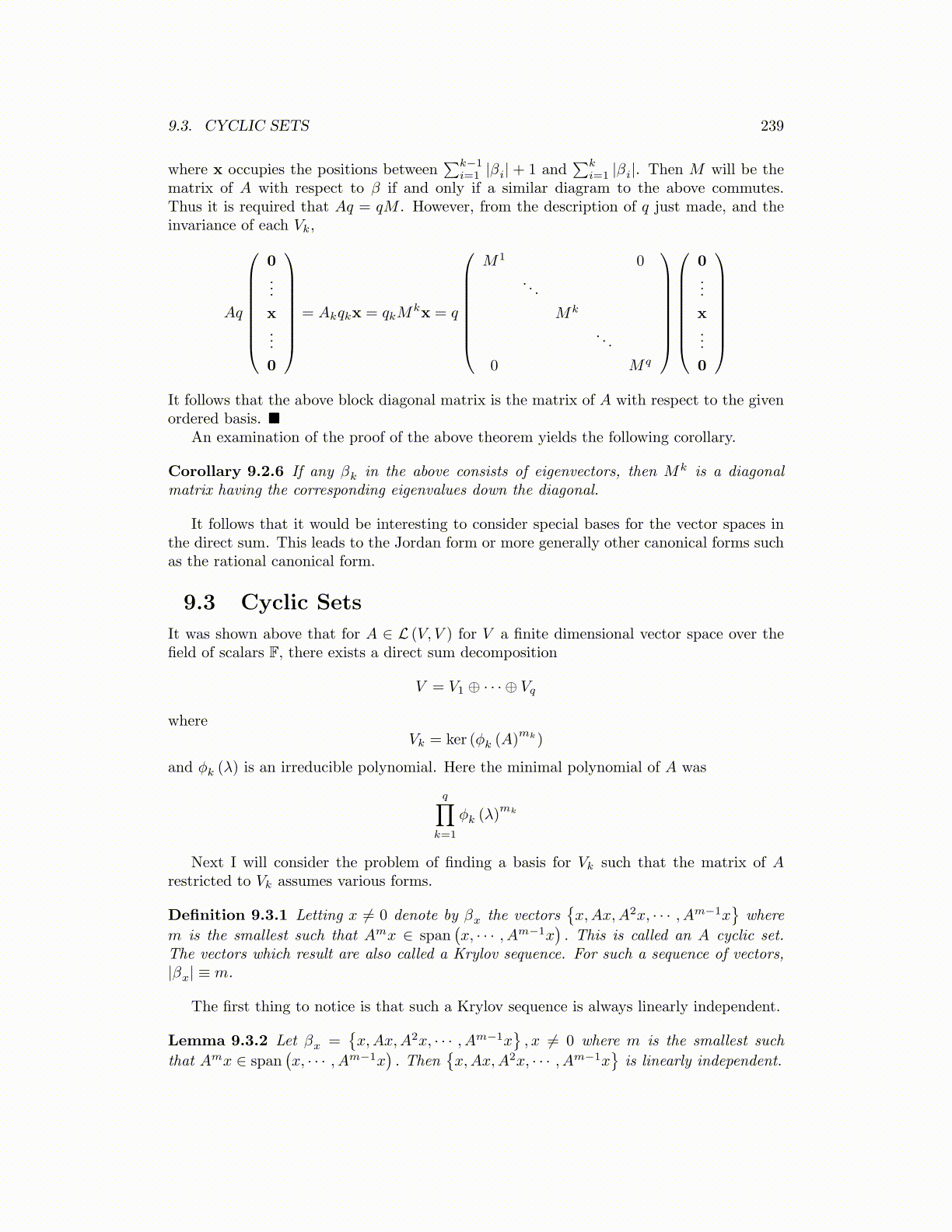
9.3. CYCLIC SETS 239
where x occupies the positions between∑k−1
i=1 |βi| + 1 and∑k
i=1 |βi|. Then M will be thematrix of A with respect to β if and only if a similar diagram to the above commutes.Thus it is required that Aq = qM . However, from the description of q just made, and theinvariance of each Vk,
Aq
0...
x...
0
= Akqkx = qkM
kx = q
M1 0. . .
Mk
. . .
0 Mq
0...
x...
0
It follows that the above block diagonal matrix is the matrix of A with respect to the givenordered basis. ■
An examination of the proof of the above theorem yields the following corollary.
Corollary 9.2.6 If any βk in the above consists of eigenvectors, then Mk is a diagonalmatrix having the corresponding eigenvalues down the diagonal.
It follows that it would be interesting to consider special bases for the vector spaces inthe direct sum. This leads to the Jordan form or more generally other canonical forms suchas the rational canonical form.
9.3 Cyclic Sets
It was shown above that for A ∈ L (V, V ) for V a finite dimensional vector space over thefield of scalars F, there exists a direct sum decomposition
V = V1 ⊕ · · · ⊕ Vq
whereVk = ker (ϕk (A)
mk)
and ϕk (λ) is an irreducible polynomial. Here the minimal polynomial of A was
q∏k=1
ϕk (λ)mk
Next I will consider the problem of finding a basis for Vk such that the matrix of Arestricted to Vk assumes various forms.
Definition 9.3.1 Letting x ̸= 0 denote by βx the vectors{x,Ax,A2x, · · · , Am−1x
}where
m is the smallest such that Amx ∈ span(x, · · · , Am−1x
). This is called an A cyclic set.
The vectors which result are also called a Krylov sequence. For such a sequence of vectors,|βx| ≡ m.
The first thing to notice is that such a Krylov sequence is always linearly independent.
Lemma 9.3.2 Let βx ={x,Ax,A2x, · · · , Am−1x
}, x ̸= 0 where m is the smallest such
that Amx ∈ span(x, · · · , Am−1x
). Then
{x,Ax,A2x, · · · , Am−1x
}is linearly independent.